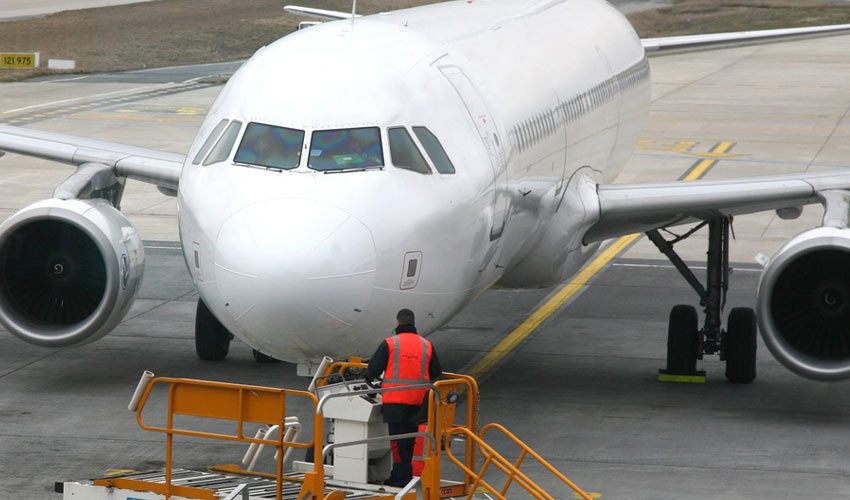Perhaps no one would have ever imagined, the world would be facing an epidemic of this proportion. Since the first coronavirus cases were registered, virologists joined efforts to deal with uncharted territory. Although the new virus was identified relatively quickly, there are still some open questions around its transmission.
Most health organizations agree that the spread of the virus comes primarily from close contact with a symptomatic person. The Centers for Disease Control and Prevention (CDC) defines it as standing within 1 or 2 m from someone for nearly 15 min. These findings are the basis of today´s guidelines aimed to protect the global community and the industry.
How can ground handling respond to the coronavirus challenges?
From optimizing aircraft maintenance to simplifying catering – ground operators are working hard on adapting their processes to achieve COVID-19 compliance. While most scheduled flights seek to strategically deliver cargo, some domestic routes are about to be reactivated amid several limitations. Are ground handling operations prepared for this new scenario?
To optimally address upcoming events, providers should be able to offer business solutions that incorporate safety practices for their employees. What do governmental regulators recommend in this sense? Based on the General Guidance elaborated by the Occupational Safety and Health Administration (OSHA), some aspects to consider when servicing the airplane include:
1. Developing programs for aircraft preventive disinfection
How preventive disinfection will be carried out may depend on three factors: the aircraft size, the stopover time, and the country´s risk level. The European Union Aviation Safety Agency (EASA) suggests a cleaning frequency of once a week for low- and medium-risk flights. On the other hand, airplanes coming from high risk areas should be thoroughly sanitized every time after flight:
- The procedure starts only when all travelers and crew have disembarked.
- Keeping the ventilation systems running while working on board ensures complete air exchange.
- The Out ring-to-center, encompassing approach makes mopping more efficient: From the front to the back of the cabin and then vice versa.
- Since disinfectants have erosive effect, these must be immediately removed after reaction on the contaminated surface. Otherwise, technical components may result damaged.
- Assigning different rags and personnel to each key area − aisle, lavatory, galley, and cockpit – might help to reduce potential cross-contamination.
- Once finished, the personal protective equipment (PPE) can be removed to be centrally disposed with all waste.
- As rule of thumb: Handwashing with soap for at least 20 seconds before and after wearing gloves.
Note: When a passenger with suspicious symptoms has being detected, sterilization begins in the affected sitting area. Then follows the whole preventive program as described.


2. Conducting routine maintenance after aircraft cleaning was completed
Implementing an aircraft Maintenance, Repair and Overhaul (MRO) plan is crucial to ensure the lifecycle of aviation parts and fleets. Due to the current urgency of transporting cargo, airplanes must be ready to take to the skies at any time.
When performing maintenance work, according to the CDC:
- No extra PPE is recommended than usual.
- Letting doors of cargo hold and cabin open, facilitates natural ventilation. If it is not enough, the auxiliary power unit can be used to optimize air circulation.
- When replacing air filters, it is not advisable to clean them with compressed air. This method may aerosolize potentially infectious material.
- Before releasing the vacuum waste tanks, it has to be checked, that the external venting system counts with a filter. That helps to avoid spreading particles.
- To discard used filters and gloves, sealed plastic bags are the most optimal choice.
- Once repairs are over, follows the usual hand hygiene routine.
What about stored commercial fleet? A 1-day-a-week maintenance program makes it ready for going back to usage. That includes to run the engines and move the aircraft to keep the tires from going flat.
3. Simplifying catering services
Most airlines are opting for cutting of or reducing catering services as possible to slow the coronavirus spread. In some cases, canned or bottled drinks are handed out together with snacks. Meals are served only in long-haul flights after double checking, that they are correctly packaged.
When it comes to manipulating food service carts, it is expected an enhanced hand cleaning. An alcohol-based sanitizer is the perfect complement for water and soap. Catering truck helpers are also prompted to wear face masks and gloves before handling non-disposable utensils and solid waste.
Final words: Trainee and open mindset are crucial to face the crisis
All in all, the coronavirus scenario puts a higher premium on well capacitated and talented workers. Their level of specialization makes them experts in their own backyard and the first contact person when questions pop up. Knowledge is power and a decisive driver for employee motivation and engagement. As the world rapidly changes, this asset must be updated.
In order to provide high-quality and cost-effective services for airlines, it is decisive that ground staff use the latest training techniques along with the best industry standards. To meet current service level agreements (SLA), they should demonstrate an understanding of how to perform their duties while dealing with the new environment. When, what and how to use PPE properly is just one part of it.
Awareness together with the capability to look beyond the edge of the plate are key in the fight against the crisis. This sets the pillar for developing competitive advantage in the future.




0 comments on “Managing COVID-19: Recommendations for Ground Handling (Vol. II)”